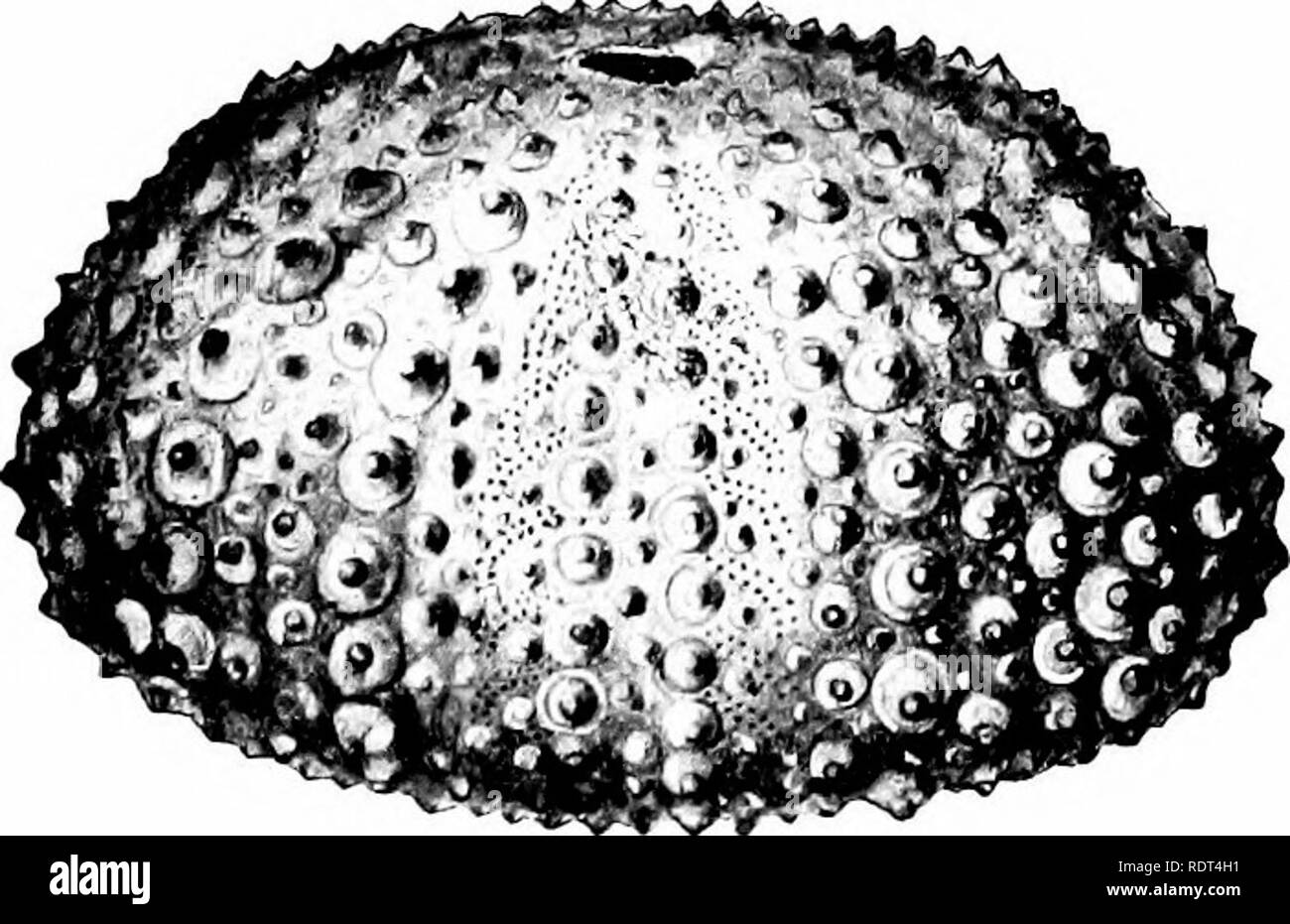. First lessons in zoology. Zoology. 138 FIRST LESSONS IN ZOOLOGY removed (fij^f. 99). Around the mouth, which is at the cen- ter of the under side, are five strong" teeth. Like the star- fishes, the young sea-urchins are free swimming creatures of very different appearance from tlic adults. Their food consists of small marine animals and of bits of organic matter which they collect from the sand and debris of the ocean floor. Man)- of the sea-urchins are gregarious, living togther in great numbers. Some have the habit of boring into the rocks of the shore between tide-lines. I have seen

Image details
Contributor:
The Book Worm / Alamy Stock PhotoImage ID:
RDT4H1File size:
7.1 MB (341.6 KB Compressed download)Releases:
Model - no | Property - noDo I need a release?Dimensions:
1964 x 1272 px | 33.3 x 21.5 cm | 13.1 x 8.5 inches | 150dpiMore information:
This image is a public domain image, which means either that copyright has expired in the image or the copyright holder has waived their copyright. Alamy charges you a fee for access to the high resolution copy of the image.
This image could have imperfections as it’s either historical or reportage.
. First lessons in zoology. Zoology. 138 FIRST LESSONS IN ZOOLOGY removed (fij^f. 99). Around the mouth, which is at the cen- ter of the under side, are five strong" teeth. Like the star- fishes, the young sea-urchins are free swimming creatures of very different appearance from tlic adults. Their food consists of small marine animals and of bits of organic matter which they collect from the sand and debris of the ocean floor. Man)- of the sea-urchins are gregarious, living togther in great numbers. Some have the habit of boring into the rocks of the shore between tide-lines. I have seen thousands of small, beautifully colored purple sea-urchins lying each in a spherical pit or hole in hard conglomerate rock on the California coast. How they. Fig. 99. —" Test " of sea-tircliin, S/i-c'ii^y/chii/iv/iis fnniciscmuis, with spines removed. (From spet;imeii.) are enabled to bore these holes is not )-et known. There is great variet}' in size and color among these animals. The colors are brown, olive, purple red, greenish blue, etc. A few kinds of sea-urchins have a flexible shell or test. The Challenger expedition dredged up from the sea bottom some sea-urchins, and when placed on the ship's deck " the test moved and shrank from touch when handled, and felt like a starfish." The cake-urchins or sand-dollars are sea-urchins having a ver)- flat bod- with. Please note that these images are extracted from scanned page images that may have been digitally enhanced for readability - coloration and appearance of these illustrations may not perfectly resemble the original work.. Kellogg, Vernon L. (Vernon Lyman), 1867-1937. New York, H. Holt and Company